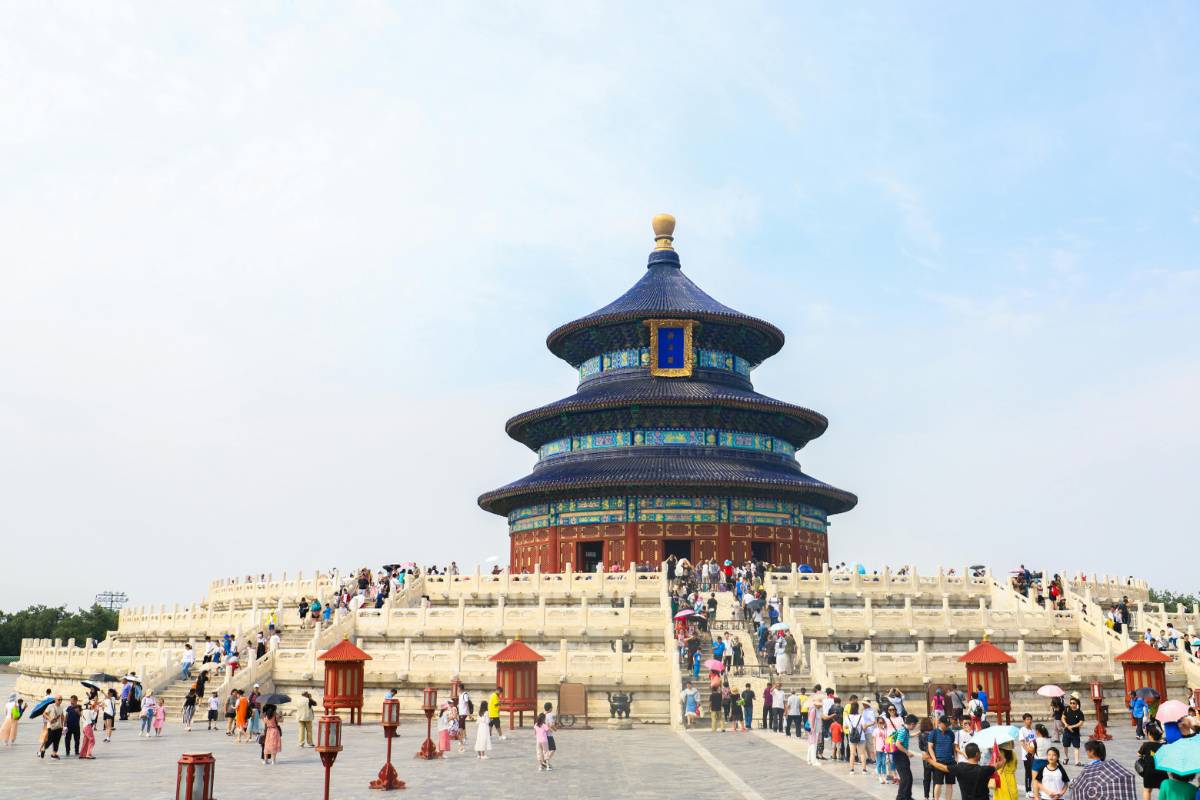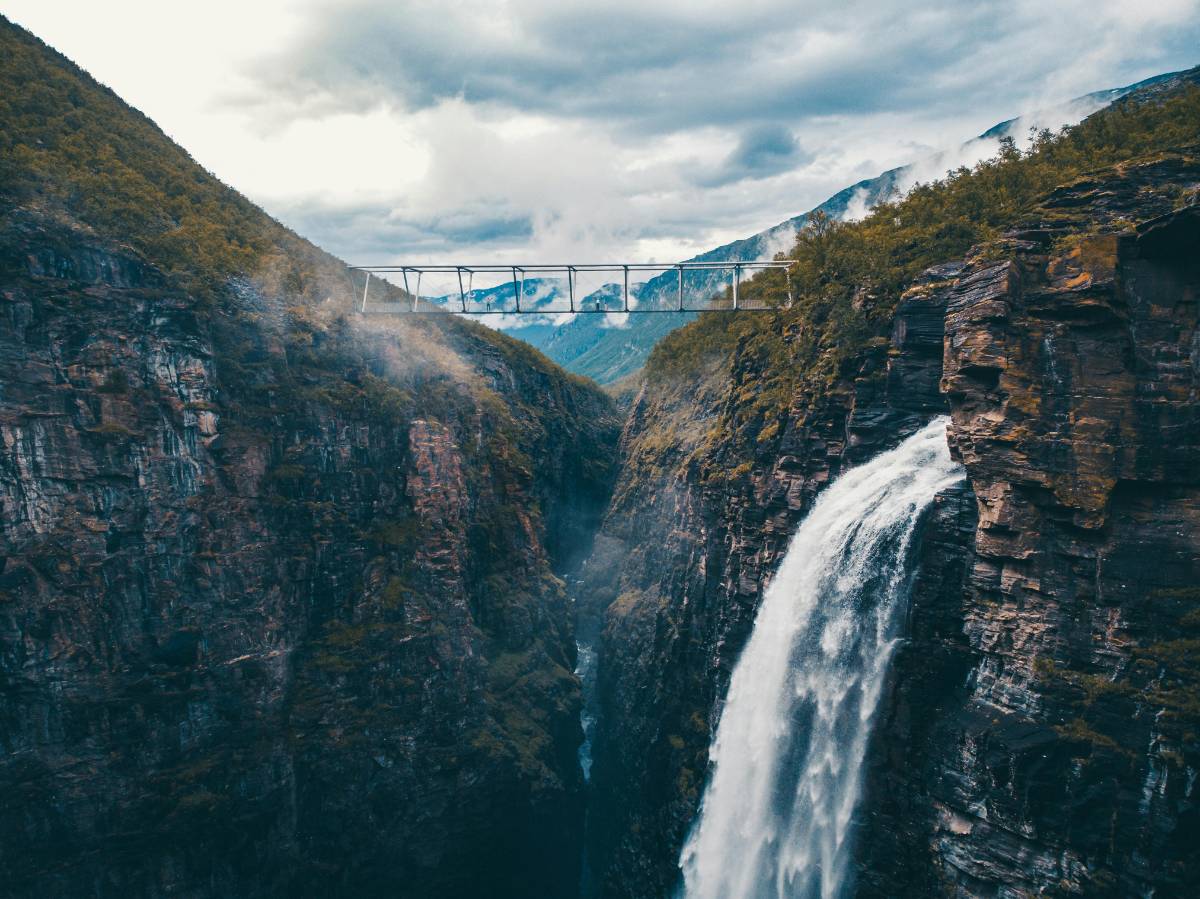
Traveling with infants and toddlers requires extra preparation, patience, and flexibility. Whether you're embarking on a road trip or flying across the globe, here are some essential tips to make the experience smoother for both you and your little ones.
 Plan Ahead
Plan AheadBefore you start packing, make sure to research your destination and the available facilities for families with young children. Look for accommodations that are child-friendly and check if there are any local services or activities suited for infants and toddlers.
Planning ahead also means considering the length of your trip and how your child will handle travel. If you’re flying, try to book a flight during your child’s nap time or at a time when they’re most likely to sleep.
Pack Plenty of Snacks and DrinksPacking snacks and drinks is essential when traveling with infants and toddlers. Make sure to bring enough snacks for the entire journey, as kids can get hungry between meals. Choose non-messy snacks like crackers, fruit pouches, and granola bars to keep them satisfied.
For younger children, bring plenty of formula, breast milk, or bottles of water. Many airports and travel stations offer water fountains, but having your own supply ensures you're prepared if water is unavailable.
Long journeys can quickly become boring for little ones, so it’s important to pack some entertainment to keep them occupied. For toddlers, consider bringing small toys, coloring books, or travel-friendly games. Tablets with preloaded videos or educational apps can be a lifesaver during long flights or car rides.
If your child is younger, don’t forget a favorite blanket, stuffed animal, or pacifier to provide comfort during the trip. Familiar items can help ease anxiety and make the journey feel more secure.

When traveling with infants and toddlers, comfort is key. Dress your child in comfortable clothes that are easy to move in and weather-appropriate. Layers are also a good option, as they can help you adjust to temperature changes in different environments.
If you're flying, avoid clothes with complicated fasteners that could be difficult to manage during security checks. Also, consider packing a spare set of clothes in case of spills, accidents, or other mishaps.
Take Frequent BreaksIf you’re traveling by car, plan to take frequent breaks during the journey. Babies and toddlers need to move around to stretch their legs and avoid becoming restless. Stop at rest areas to let them play and get some fresh air before continuing your trip.
When flying, consider booking longer layovers to give your child a chance to move around and burn off some energy before the next flight. Many airports now have play areas for children, so make use of these spaces if you can.
Prepare for Security and Check-InAirport security and check-in can be daunting when traveling with young children. Be sure to arrive early so you have time to navigate the process without feeling rushed.
At security, be prepared to carry your infant or toddler through the scanner. If your child is too young to walk, make sure you have a carrier or stroller for them. Liquids like formula, breast milk, and baby food are allowed, but you may need to present them for inspection.
Bring Baby GearDon’t forget essential baby gear like strollers, car seats, and baby carriers. Many airlines allow you to check these items for free or bring them onboard. Consider renting baby gear at your destination to lighten your load, especially if you’re traveling overseas.
Make sure your stroller is lightweight and easy to fold for convenience during security and boarding. A baby carrier or sling is also great for hands-free movement when navigating airports or sightseeing.
Monitor Your Child’s HealthTraveling can disrupt your child’s routine and affect their health. Ensure they’re getting enough rest and staying hydrated throughout the trip. If your child is still breastfeeding or bottle-feeding, try to maintain their usual feeding schedule as much as possible.
Bring any necessary medications, such as infant pain relievers or allergy medicine, in your carry-on bag in case of emergencies. It's also a good idea to have a thermometer, baby wipes, and hand sanitizer on hand to keep your little one comfortable and healthy.
Be Patient and FlexibleTraveling with young children can be unpredictable, so it’s essential to stay patient and flexible. Your child may get fussy, tired, or need extra attention during the journey, but try to stay calm and go with the flow.
Allow extra time for everything—boarding, security checks, and bathroom breaks. If something doesn’t go as planned, don’t stress. Remember, the journey is part of the experience, and flexibility is key to making it through.
ConclusionTraveling with infants and toddlers may present some challenges, but with a little preparation and patience, it can also be a rewarding experience. By following these tips and being mindful of your child’s needs, you can ensure a smoother and more enjoyable trip for the whole family. So, pack your bags, prepare for the journey, and create lasting memories with your little one.
The best of Business news, in your inbox.

Legal Strategist & Thought Leader
Stefen brings a strategic legal mindset with a passion for translating legal complexities into digestible insights. Their articles reflect a deep understanding of justice, rights, and reform.
Read more from Stefen
Marketplaces are the heartbeat of many cultures around the world. They offer a unique glimpse into local traditions, flavors, crafts, and commerce. From bustling street markets to grand historical bazaars, these iconic marketplaces not only showcase regional products but also provide a cultural experience unlike any other. Here are some of the most famous marketplaces that you should visit on your travels.1317a.jpg***Grand Bazaar, Istanbul, TurkeyOne of the largest and oldest covered markets in the world, Istanbul’s Grand Bazaar is a must-see for any traveler. With over 4,000 shops spread across 61 streets, it offers everything from handmade carpets and Turkish delights to jewelry and spices. The market has been in operation for centuries and is not just a place to shop, but a historical landmark where you can immerse yourself in Turkish culture and tradition.As you wander through the labyrinth of narrow alleys, take time to haggle with shopkeepers, discover antiques, and savor traditional Turkish street food. The Grand Bazaar is a sensory overload of colors, sounds, and smells.***Souk Madinat Jumeirah, Dubai, UAEDubai is known for its modern architecture and luxury shopping malls, but the Souk Madinat Jumeirah offers a more traditional marketplace experience. Located in the shadow of the iconic Burj Al Arab, this bustling souk is designed to mimic an ancient Arabian marketplace with a mix of modern amenities.Here, you can find a variety of goods, including spices, textiles, gold jewelry, and handicrafts. The souk’s picturesque canals and narrow walkways make it a lovely spot to spend an afternoon. It’s a great place to experience Dubai’s heritage while enjoying its contemporary charm.1317b.jpg***Chatuchak Weekend Market, Bangkok, ThailandIf you're in Bangkok, the Chatuchak Weekend Market is a shopping paradise. With over 15,000 stalls, it is one of the largest markets in the world. This sprawling market offers a variety of products, from clothing and antiques to plants and pets. It’s a great place to pick up unique souvenirs and gifts or simply to enjoy the hustle and bustle of Thai street culture.Don’t forget to sample some of the delicious street food available, from pad Thai and mango sticky rice to freshly squeezed juices and grilled meats. Chatuchak is an experience that appeals to all the senses and is a must-visit when in Bangkok.***La Boqueria Market, Barcelona, SpainLa Boqueria is one of Barcelona’s most iconic food markets, and it’s a must-visit for food lovers. Located just off the famous La Rambla, the market offers a vibrant display of fresh produce, meats, seafood, cheeses, and pastries. The colorful stalls are a feast for the eyes, and you’ll find locals and tourists alike shopping for their daily ingredients or grabbing a quick bite at one of the market’s many tapas bars.The market dates back to the 13th century, and its historical significance adds to the charm. Don’t miss the opportunity to try some traditional Catalan specialties, such as jamón ibérico, fresh seafood, and churros.***Marrakech Souks, MoroccoThe souks of Marrakech are a maze of narrow streets and alleys where you can shop for everything from handmade leather goods to intricately designed pottery. Located in the heart of the medina, the souks are a key part of Marrakech’s cultural fabric, offering a sensory journey through Morocco’s rich artisan traditions.The souks are divided into different sections, each dedicated to a specific product, such as spices, textiles, or metalwork. Bartering is a common practice here, so be prepared to negotiate prices with shopkeepers. The bustling atmosphere, the vibrant colors, and the exotic scents make the Marrakech souks an unforgettable experience.***Pike Place Market, Seattle, USAOne of the oldest public markets in the United States, Pike Place Market is a Seattle landmark. It’s known for its fresh seafood, including the famous flying fish, where vendors toss fish to each other as part of their tradition. But Pike Place Market is also home to a variety of other stalls selling flowers, crafts, and local produce.Pike Place Market offers a great introduction to Seattle’s food scene, with numerous cafes and restaurants offering fresh, local ingredients. It’s also a great place to explore the arts, as many local artists sell their works here. Don’t forget to stop by the iconic “gum wall” for a quirky photo opportunity.***Jemaa el-Fnaa, Marrakech, MoroccoAnother highlight of Marrakech’s medina is the Jemaa el-Fnaa square, a bustling marketplace where you can find food vendors, traditional healers, snake charmers, and performers. As the sun sets, the square comes alive with street food stalls offering delicious Moroccan specialties, such as tagine, couscous, and freshly squeezed orange juice.Jemaa el-Fnaa is an atmospheric place where you can immerse yourself in the sights and sounds of Marrakech. The lively atmosphere, combined with the rich history, makes this marketplace an unforgettable experience.***ConclusionWhether you’re shopping for fresh ingredients, unique souvenirs, or simply soaking in the local culture, iconic marketplaces around the world offer travelers an unforgettable experience. From the centuries-old markets of Istanbul and Marrakech to the vibrant stalls of Bangkok and Barcelona, each marketplace has its own charm and story to tell. Make sure to add these destinations to your travel list and experience the magic of these bustling bazaars firsthand.

Scandinavia is home to some of the most stunning landscapes in the world, from the towering fjords of Norway to the serene archipelagos of Sweden and the vibrant cities of Denmark. Whether you're an outdoor enthusiast, a history buff, or simply looking to explore new cultures, Scandinavia has something for everyone. Here’s a guide to the top destinations across Sweden, Norway, and Denmark.1344a.jpg***Stockholm, SwedenSweden's capital, Stockholm, is a beautiful city spread across 14 islands connected by over 50 bridges. Its old town, Gamla Stan, is full of cobbled streets, colorful buildings, and historical landmarks like the Royal Palace and Stockholm Cathedral. The city also boasts modern attractions like the ABBA Museum, the Vasa Museum, and the innovative Fotografiska photography museum.Stockholm is also known for its green spaces and waterfront parks. You can explore the archipelago by boat, visiting scenic islands like Vaxholm and Grinda for hiking, swimming, or simply relaxing by the water.***Oslo, NorwayOslo, Norway’s capital, is a city of striking contrasts where modern architecture meets nature. The iconic Oslo Opera House is a must-see, where you can walk on its slanted roof for panoramic views of the Oslofjord. Also, the Viking Ship Museum and the National Gallery house fascinating collections of art and history, including Edvard Munch’s famous painting, "The Scream."Oslo is surrounded by lush forests and hills, perfect for outdoor activities such as hiking, biking, and cross-country skiing in the winter. The nearby Holmenkollen Ski Jump is another major attraction, offering sweeping views of the city.***Copenhagen, DenmarkCopenhagen, the capital of Denmark, is known for its laid-back atmosphere and progressive design. Visit the famous Tivoli Gardens amusement park, explore the colorful houses along Nyhavn harbor, or take a stroll through the cobblestone streets of Christianshavn, where you’ll find a mix of modern architecture and historic buildings.Don’t miss the opportunity to visit the Little Mermaid statue, based on Hans Christian Andersen's fairy tale. For food lovers, Copenhagen is home to several Michelin-starred restaurants, and the city’s food markets, like Torvehallerne, offer a wide array of fresh local delicacies.***Bergen, NorwayNestled between mountains and fjords, Bergen is one of Norway’s most scenic cities. Known as the gateway to the fjords, it’s the perfect starting point for exploring the nearby UNESCO-listed Nærøyfjord and Sognefjord. The city’s historic Bryggen district is a UNESCO World Heritage site, with colorful wooden houses lining the harbor.Bergen is also famous for its seafood, and the bustling Fisketorget (fish market) is a great place to sample fresh catches. For those looking for an outdoor adventure, take the Fløibanen funicular to the top of Mount Fløyen for panoramic views of the city and surrounding fjords.***Gothenburg, SwedenGothenburg, located on the west coast of Sweden, is known for its maritime heritage and vibrant food scene. The city's canals and leafy boulevards are lined with cafés, bars, and restaurants. The famous Liseberg amusement park is a fun stop for families, while the Universeum science center offers interactive exhibits for all ages.For a taste of Gothenburg’s culinary scene, visit the Feskekôrka fish market or dine at one of the city’s top seafood restaurants. The nearby archipelago also offers stunning landscapes, with islands like Hönö and Öckerö perfect for hiking or relaxing by the sea.1344b.jpg***Aarhus, DenmarkAarhus, Denmark's second-largest city, is known for its youthful energy, as it’s home to Denmark's largest university. The city’s Old Town, Den Gamle By, is an open-air museum that gives a glimpse into Denmark’s past, while the ARoS Aarhus Art Museum offers a contemporary art experience with an impressive rooftop view of the city.Aarhus also boasts a vibrant food scene with trendy cafés, innovative restaurants, and street food markets. The city is surrounded by beautiful natural scenery, including forests and beaches that are perfect for a relaxing day trip.***Røros, NorwayRøros is a UNESCO World Heritage town known for its well-preserved wooden buildings and rich mining history. Located in central Norway, this charming town offers a glimpse into Norway’s past, with its old mining houses, traditional wooden homes, and cobbled streets.Visit the Røros Museum to learn about the town’s history, and don’t miss the chance to explore the surrounding mountains and forests, ideal for hiking, skiing, and snowshoeing. Røros is particularly beautiful in winter, when the town is blanketed in snow, creating a winter wonderland.***Malmo, SwedenMalmo, located in southern Sweden, is a modern and multicultural city that’s just a short train ride away from Copenhagen. The city is known for its striking architecture, including the Turning Torso, the tallest building in Scandinavia. Malmo’s old town, Gamla Staden, is filled with cobbled streets, colorful houses, and charming cafés.Malmo is also a great destination for food lovers, with a wide range of restaurants offering everything from traditional Swedish dishes to international cuisine. The nearby Ribersborg Beach is perfect for relaxing in the summer, and the city also offers a number of parks and green spaces.***Lofoten Islands, NorwayFor those looking to explore Norway's wild side, the Lofoten Islands are a must-visit destination. Located above the Arctic Circle, the Lofoten Islands are known for their rugged landscapes, picturesque fishing villages, and spectacular natural beauty. Here, you can hike through dramatic mountain ranges, spot wildlife such as sea eagles and whales, or go kayaking in crystal-clear waters.The islands are also famous for their traditional rorbu (fisherman’s cabins), where you can stay and experience the local way of life. Don’t miss the Lofotr Viking Museum, where you can learn about Viking history and even try your hand at ancient crafts.***ConclusionScandinavia offers an incredible variety of destinations, each with its own unique charm and character. Whether you’re visiting the vibrant cities of Sweden, the majestic fjords of Norway, or the welcoming atmosphere of Denmark, you’ll be treated to a mix of stunning landscapes, rich history, and modern culture. So pack your bags and prepare for an unforgettable adventure through one of the most beautiful regions of the world.

For those seeking an extraordinary journey filled with comfort, opulence, and memorable experiences, luxury travel destinations offer the perfect escape. These exclusive locations combine natural beauty with world-class amenities, private accommodations, and personalized services, making each stay a unique adventure.1168a.jpg***Paris, France – A Timeless Destination for EleganceKnown as the City of Light, Paris exudes sophistication and romance, making it a top choice for luxury travelers. Lavish hotels such as The Ritz and Le Meurice offer palatial rooms, Michelin-starred restaurants, and views of iconic landmarks like the Eiffel Tower. Shopping at designer boutiques along Champs-Élysées or enjoying private art tours in the Louvre is part of the ultimate Parisian experience.Beyond the main attractions, private Seine River cruises and gourmet wine-tasting sessions provide immersive, exclusive experiences. Paris is a city where elegance and luxury harmoniously blend, creating unforgettable memories.***Maldives – Secluded Paradise with Overwater VillasThe Maldives is a luxury destination celebrated for its crystal-clear waters, white sandy beaches, and private overwater bungalows. Resorts like the Soneva Jani and the Four Seasons Landaa Giraavaru offer secluded villas with direct ocean access, private infinity pools, and personalized butler services.From exploring coral reefs through private snorkeling tours to dining under the stars on secluded islands, the Maldives provides an intimate, exclusive setting. With exceptional spa treatments and underwater restaurants, it is the perfect destination for those seeking relaxation in paradise.***Dubai, UAE – Glamour and Innovation in the DesertDubai stands out as a futuristic city of luxury, offering everything from sky-high hotels to extravagant shopping experiences. The Burj Al Arab, with its sail-shaped architecture and seven-star amenities, is a symbol of opulence. Travelers can enjoy private helicopter tours, exclusive desert safaris, and luxurious yacht cruises along the coast.Dubai’s vibrant culinary scene includes fine dining in world-renowned restaurants and unique experiences like dining under the sea at Ossiano. With shopping festivals, private golf courses, and indoor skiing, Dubai redefines luxury travel.1168b.jpg***Santorini, Greece – Sunset Views in Aegean BlissSantorini captivates luxury travelers with its iconic whitewashed buildings, deep blue domes, and spectacular sunset views. High-end accommodations like Canaves Oia Suites provide cliffside rooms with infinity pools overlooking the caldera. Private yacht tours around the islands and exclusive wine tours in the famous vineyards make Santorini an idyllic destination.Whether relaxing in a private villa or dining at upscale seafood restaurants, the unique blend of luxury and serene surroundings makes Santorini a magical escape for discerning travelers.***Kyoto, Japan – A Journey into Traditional LuxuryKyoto combines the elegance of Japanese tradition with modern luxury. The city’s high-end ryokans (traditional inns) such as Hoshinoya Kyoto offer private rooms with hot spring baths, Kaiseki-style meals, and scenic views of lush Japanese gardens. Visitors can enjoy tea ceremonies, guided tours of ancient temples, and private geisha performances.For a deeper cultural experience, private cooking classes, Zen meditation sessions, and curated shopping tours of artisanal crafts provide a blend of elegance and authenticity. Kyoto is a tranquil luxury destination for those who value tradition and beauty.***New York City, USA – The City That Never Sleeps in StyleNew York City is a luxury playground offering premier hotels, fine dining, and unparalleled entertainment. Hotels like The Plaza and The St. Regis provide timeless elegance with exceptional service. Private helicopter tours over Manhattan, exclusive Broadway show tickets, and shopping at Fifth Avenue’s designer stores are just a few indulgent experiences available.In addition to art galleries and renowned museums, visitors can dine at Michelin-starred restaurants and explore the city’s vibrant nightlife. New York combines the excitement of a bustling city with world-class luxury amenities, making it an unforgettable destination.***Conclusion: Elevate Your Travel with Luxury DestinationsLuxury travel destinations redefine the meaning of a holiday by offering a balance of adventure, relaxation, and exclusivity. Whether it’s the secluded beaches of the Maldives, the cultural elegance of Kyoto, or the glamour of Dubai, these destinations provide a perfect escape for those who seek the finest experiences. With carefully curated services and attention to detail, luxury travel opens up a world of unforgettable journeys that make every moment extraordinary.

Asia is a vast and diverse continent with an incredible range of cultures, landscapes, and experiences. While popular destinations like Tokyo, Bangkok, and Bali attract millions of tourists every year, there are countless hidden gems waiting to be explored. These lesser-known destinations offer a more authentic, off-the-beaten-path experience. Here are some of Asia’s hidden treasures that should be on your travel radar.1350a.jpg***Sapa, VietnamNestled in the northern mountains of Vietnam, Sapa is a beautiful region known for its terraced rice fields, stunning views, and rich cultural heritage. The area is home to several ethnic minority groups, including the Hmong and Red Dzao people, who offer visitors a chance to learn about their traditional way of life.While Sapa is becoming more popular, it remains less crowded than other parts of Vietnam, offering a peaceful retreat in the midst of natural beauty. You can trek through the hills, visit local markets, and enjoy the serenity of this picturesque destination.***Kep, CambodiaLocated along Cambodia’s southern coast, Kep is a charming seaside town known for its fresh seafood, particularly the famous crab. Unlike its more bustling neighbor Sihanoukville, Kep has retained its laid-back charm, with beautiful beaches, colonial architecture, and scenic views of nearby islands.Kep is also home to the Kep National Park, which offers hiking trails through lush forests and up to a viewpoint with panoramic views of the coast. It’s the perfect place for those seeking a quiet escape with a taste of Cambodia’s coastal beauty.***Bohol, PhilippinesWhile the Philippines is known for its beautiful islands, Bohol remains a somewhat hidden gem. Located in the central Visayas region, Bohol is famous for its unique Chocolate Hills, a series of grass-covered hills that turn brown during the dry season, creating a landscape unlike any other in the world.In addition to its natural wonders, Bohol is also home to stunning white-sand beaches, crystal-clear waters, and the Tarsier Sanctuary, where visitors can see the world’s smallest primate in its natural habitat. Bohol offers a perfect blend of nature, wildlife, and relaxation.1350b.jpg***Luang Prabang, LaosLuang Prabang, located in northern Laos, is a UNESCO World Heritage town known for its stunning temples, colonial architecture, and tranquil atmosphere. The town sits at the confluence of the Mekong and Nam Khan rivers, surrounded by lush mountains and forests.Luang Prabang offers a peaceful retreat, where visitors can explore Buddhist temples, take part in alms-giving ceremonies, or visit nearby waterfalls. The town’s mix of cultural experiences and natural beauty makes it an ideal destination for those looking to immerse themselves in Laos’ rich history and traditions.***Mount Rinjani, IndonesiaFor adventure seekers, Mount Rinjani on the island of Lombok in Indonesia is an incredible hidden treasure. The second-highest volcano in Indonesia, Mount Rinjani offers a challenging yet rewarding trek to its summit, where hikers can enjoy breathtaking views of the surrounding landscape and the crater lake below.The trek to Mount Rinjani takes several days, but the views from the top are worth every step. Along the way, trekkers can enjoy the island’s natural beauty, including waterfalls, hot springs, and the diverse wildlife that inhabits the slopes of the volcano.***Nagaland, IndiaLocated in the northeastern part of India, Nagaland is a culturally rich and relatively undiscovered region. Known for its vibrant tribal culture, the state is home to a number of indigenous groups with their own unique languages, traditions, and festivals.Nagaland offers an authentic experience for travelers interested in learning about indigenous cultures, traditional handicrafts, and local customs. The Hornbill Festival, held annually in December, is a highlight, offering a chance to witness traditional music, dance, and cultural performances from across the state.***The Gili Islands, IndonesiaWhile Bali often steals the spotlight in Indonesia, the Gili Islands, located off the coast of Lombok, remain a hidden treasure for travelers seeking a more relaxed island experience. The Gili Islands, consisting of Gili Trawangan, Gili Air, and Gili Meno, are known for their clear turquoise waters, vibrant coral reefs, and laid-back atmosphere.The Gili Islands are perfect for snorkeling, diving, or simply lounging on the beach. Without cars on the islands, the peaceful vibe is ideal for those looking to unwind and disconnect from the hustle and bustle of daily life.***ConclusionAsia is home to countless hidden treasures waiting to be explored. From the tranquil mountain landscapes of Sapa to the cultural wonders of Luang Prabang, there are endless destinations that offer a unique and authentic travel experience. Whether you’re seeking adventure, relaxation, or cultural immersion, these lesser-known destinations in Asia are sure to leave you with unforgettable memories.